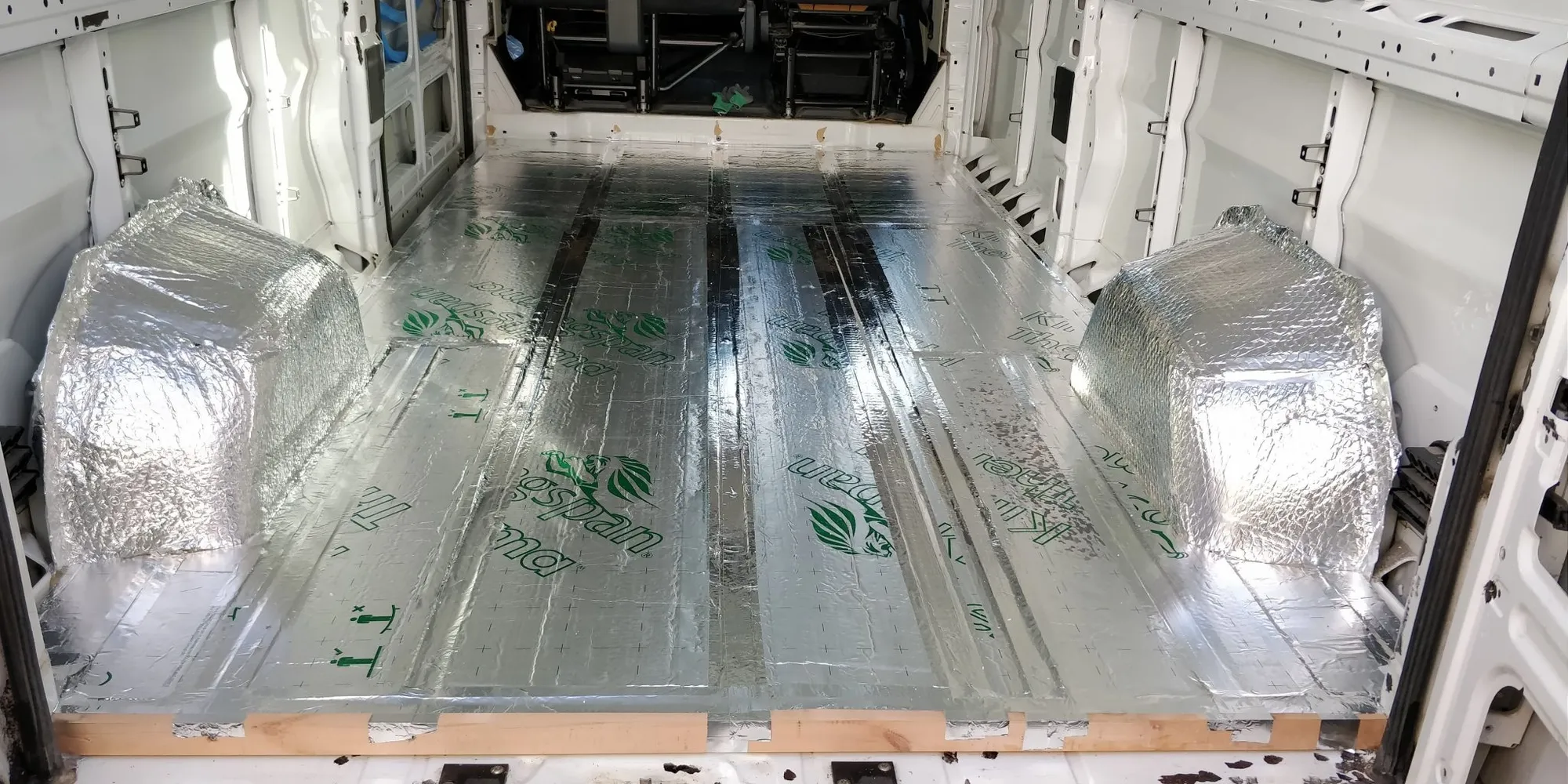Campervan Insulation – How and Why to Fit It
This simple campervan insulation guide will show you how different insulation materials work and the best way to approach fitting them.

Once you’ve purchased a van, cleared it out and cleaned it up inside - it's time to start insulating your campervan.
Exciting times!
But, just before you attack the job with the cheapest materials you can find, use the info below to calculate exactly what van insulation you'll need and the best way to install it.
Why add campervan insulation?
Vans are essentially metal boxes and metal is one of the best conductors of heat, referred to as ‘thermal conductivity’.
That’s not a good thing as it can literally act as a fridge in the winter and an oven in the summer.
To prevent these temperature extremes you can use a layer of campervan insulation, plus a vapour barrier, between the metal of the van and the internal lining you’re going to install later.
Which campervan insulation materials are best?
Materials that have a low ‘K-rating’, sometimes shown as W/mK, are the best to use.
This rating tells us how much heat will pass through that specific material, or how ‘conductive’ it is, so the lower the number the better.
If you want to know more then this page goes much deeper into the terms and equations behind it.
Sourcing the following materials that are already commonly used to insulate buildings means they are cost effective and have low K ratings.
These insulation boards come under many brand names like Kingspan and Celotex.
They are some of the lowest rated materials available and can be cut to whatever size you need.
Ideal for covering the floor, ceiling and larger wall areas.
This stuff is very handy for filling in the gaps and can help to secure your insulation boards in place.
It expands quite a bit once it's sprayed so avoid applying too much inside the framework of the van and distorting the bodywork.
Great for insulating the smaller gaps and places where using insulation boards will be difficult.
That’s usually at the top of the walls and inside some door sections.
If you want to be a little kinder to the environment then using a natural insulator like sheep's wool is the way to go.
Its thermal properties are pretty much on a par with manufactured materials and you can buy it in easy to use rolls.
How to fit campervan insulation
I'd suggest starting with the floor and ceiling areas to reduce waste materials as much as possible.
These will take the largest of sections of insulation board (PRI) and you’ll end up with some offcuts which you can use on the smaller areas later.
Charlie's Example: I used a majority of PIR boards for the floor, ceiling and walls on my first build. I filled in the gaps with earth-wool and went around using insulation foam to firm things up.
Van Floor Insulation
For the floor campervan insulation, first create a grid of timber battens and fix these down using a solvent free grab adhesive.
You can also secure the wood to the floor using some short self tapping screws which will pierce the metal floor beneath to secure in place.
If you do this be sure to use something like Waxoil on any exposed screw threads underneath the van to prevent any rust issues.
Be sure that the wood is the same height as the insulation so that your floor lays entirely flat.

Cut the insulation boards to size and fill in the grid entirely, then run around all the joins with some foil insulation tape to complete the vapour barrier.
Once this is done you can lay down your sub-floor and have a stable base to stand on to complete the rest of the insulation.

Van Ceiling Insulation
Working above your head is always tricky so to make it easier, buy some ‘stick pins’. They have self-adhesive heads and stick to the metal ceiling.

You can push the insulation boards onto the sharp pins and secure them in place with the little caps provided.
This stops the boards falling down before you can get your finished ceiling installed.
Fill in any gaps and awkward areas with a squirt of expanding foam and cut off any excess once it dries hard. This will also help to hold the boards in place nicely.
Van Walls and Door Insulation
Tackle the larger areas of the side panels first, using PIR board and stick pins to fill these in.
Switch to your wool style material for the smaller compartments, such as the bits along the top or the walls.

There’s no need to overstuff here as the wool won’t work as effectively if it’s really compacted. It needs a bit of space to work as efficiently as possible.
Then use spray foam to fill in the gaps as before, being careful not to overfill any support beams etc.
Add a campervan thermal barrier
Once you’ve fixed in all your campervan insulation it’s time to create a vapour barrier.
This will prevent moisture from condensing on the cold metal of the van and causing hidden issues.
Use some readily available rolls of thermal foil and cover the entire inside of the van.

Then use foil insulation tape to close up any gaps and secure the foil in place like the above photo.
Be sure to pull through any wiring or pipework that you’ve already installed!
Parts List:
- Foil insulation tape
- Thermal foil rolls
- PIR Insulation boards (50mm and 25mm)
- 25mm Treated wooden battens
- Knauf Earthwool
- Expanding spray foam
Tools Used:
- Scissors
- Small multi saw for cutting PIR boards
- Spray foam gun
- Sharpie

